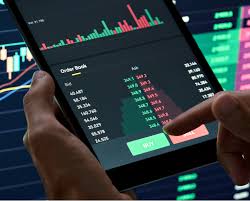
Understanding Crypto Trading Charts: Your Ultimate Guide
In the rapidly evolving world of cryptocurrency trading, having a firm grasp of crypto trading charts is crucial for making informed decisions. Crypto Trading Charts click here to explore how to harness the power of these charts to improve your trading strategies. Trading charts serve as visual representations of price movements over time, helping traders identify trends, patterns, and potential reversals in the market. In this guide, we’ll explore various types of crypto trading charts, how to read them, and their significance in crafting effective trading strategies.
1. The Basics of Crypto Trading Charts
Crypto trading charts are graphical representations of the historical price movements of cryptocurrencies. They provide traders with a way to visualize price fluctuations over different time frames, ranging from minutes to months. Understanding the basic structure of these charts is key to successful trading.
1.1 Price Axes
On any crypto trading chart, you’ll typically find two axes: the vertical axis represents price, while the horizontal axis represents time. By analyzing the data plotted on these axes, traders can identify the current price of a cryptocurrency and its movements over time.
1.2 Time Frames
Trading charts can display data over various time frames. Short-term traders might focus on minute or hourly charts, while long-term investors may prefer daily, weekly, or even monthly charts. Each time frame offers its unique insights, making it crucial to select the one that aligns with your trading strategy.
2. Types of Crypto Trading Charts
There are several types of crypto trading charts. Each type has its strengths and weaknesses, making them suitable for different trading styles. Here are the most common chart types:
2.1 Line Charts
Line charts are the simplest form of crypto trading charts. They connect closing prices over a specific period, creating a continuous line. While they provide a clear visual of price movements, they lack the detail necessary for in-depth analysis.
2.2 Bar Charts

Bar charts offer more information than line charts. Each bar represents the open, high, low, and close prices within a specific time frame. This allows traders to see price ranges and identify market volatility. They are particularly useful for identifying trends.
2.3 Candlestick Charts
Candlestick charts are favored by many traders due to their rich visual data. Each candlestick shows the open, high, low, and close prices for a given period. The body of the candlestick illustrates the price range between the open and close, while the wicks show the high and low during that time. Candlestick patterns can indicate market sentiment and potential reversal points.
2.4 Heikin-Ashi Charts
Heikin-Ashi is a modified candlestick chart that smoothes out price data to make trends more apparent. This chart type helps traders identify market trends by filtering out some of the noise seen in traditional candlestick charts.
3. How to Read Crypto Trading Charts
Reading crypto trading charts is essential for making informed trading decisions. Here are some key concepts to understand:
3.1 Trendlines
Trendlines are essential for visualizing the overall direction of a cryptocurrency’s price. An upward trendline indicates a bullish market, while a downward trendline suggests a bearish market. Drawing trendlines can help traders identify potential entry and exit points.
3.2 Support and Resistance Levels
Support levels represent the price points where buying interest is strong enough to overcome selling pressure. In contrast, resistance levels indicate where selling interest is strong enough to overcome buying pressure. Identifying these levels can help traders make informed decisions about when to enter or exit a position.
3.3 Volume Analysis
Volume plays a crucial role in trading charts. High trading volume often accompanies price movements, indicating strong market interest. Analyzing volume can provide insight into potential price reversals or confirmations of existing trends.
4. The Importance of Technical Analysis
Technical analysis involves using trading charts and various indicators to forecast future price movements based on historical data. Many traders rely on technical analysis to identify potential trade opportunities and make data-driven decisions.

4.1 Indicators
There are numerous indicators that traders can use in their analysis. Examples include moving averages, Relative Strength Index (RSI), and Moving Average Convergence Divergence (MACD). These indicators help traders gauge the strength of trends and identify potential reversals.
4.2 Chart Patterns
Chart patterns, such as head and shoulders, triangles, and flags, can signal potential market movements. Recognizing these patterns can give traders insights into possible future price actions.
5. Developing a Trading Strategy
A solid trading strategy incorporates analysis of crypto trading charts and other market factors. Here are some essential elements to consider:
5.1 Risk Management
Effective risk management is vital for long-term trading success. Setting stop-loss orders and determining position sizes based on your risk tolerance can help mitigate potential losses.
5.2 Entry and Exit Points
Utilizing charts to identify optimal entry and exit points is key to a successful trading strategy. Look for favorable setups based on price action, chart patterns, and indicators.
6. Continuous Learning and Adaptation
The crypto market is dynamic, and staying updated on market trends and news is essential for traders. Continuous learning about new charting techniques and trading strategies can improve your trading performance and outcomes.
Conclusion
In conclusion, understanding crypto trading charts is essential for anyone looking to navigate the cryptocurrency market successfully. By familiarizing yourself with different chart types, learning to read them effectively, and applying technical analysis, you can craft a trading strategy that enhances your odds of success. Remember, the key to successful trading lies in continuous learning and adapting to market conditions. Happy trading!